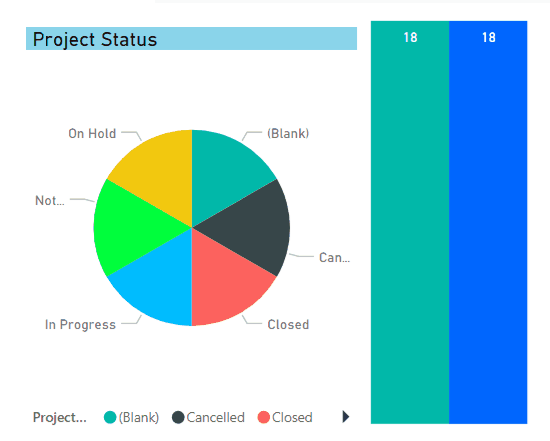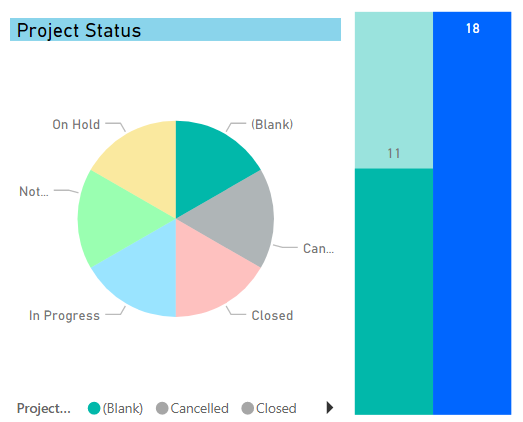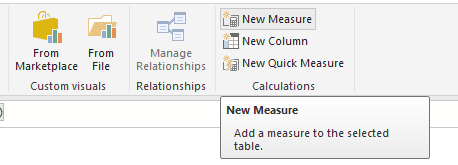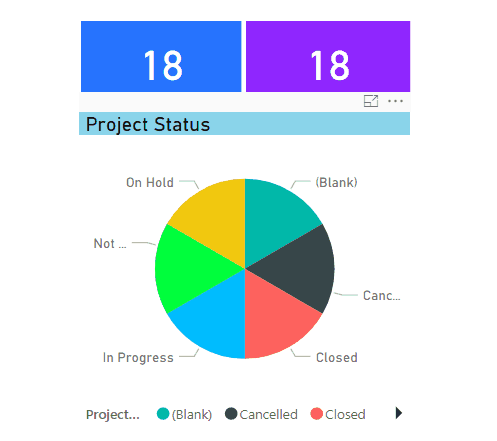In this article, I will show How to
Calculate the total rows, Ignoring Filters In Power BI

Scenario
In Power BI, I have a “Projects” table as SQL data source, I would like to show
- The total number of rows, ignoring the filter.
- The total number of rows, depending on the filter.
As below shown,
- The Blue bar indicates to the fixed rows count (Count Rows ALL).
- The Green indicates to the rows count (Count).

Steps:
Add “Count Rows All” Measure In Power BI
This measure returns the Rows count, ignoring any filters.
- In Home tab, Add a new Measure.

- Set the Measure name and type the below formula
![]()
[code language=”HTML”]
ProjectFixedCount = COUNTROWS(ALL(‘Table Name’))
[/code]
The above formula counts all rows of the table that retrieved from ALL function.
All() function In Power BI
Return all the rows in a table by clearing and ignoring any filters that might be applied.
COUNTROWS() function In Power BI
Count the number of rows in the table.
Add “Count” Measure In Power BI
This measure returns the Rows Count based on the filter.
- In Home tab, Add a new Measure.

- Set the Measure name and type the below formula

[code language=”HTML”]
ProjectsCount = COUNT(‘TableName'[Column Name])
[/code]
Calculate the Total number of table rows, ignoring the filters In Power BI
Finally, you can add the two measures to any Power BI control as you prefer.

Applies To
- Power BI.
Conclusion
In this article, I have explained How to calculate the Total number of table rows, ignoring the filters In Power BI?

Simple and great example! I’m newer to Power BI and trying to figure out how I can do this with DISTINCTCOUNT() or COUNTROWS(CALCULATETABLE(DISTINCT()).
I am trying to produce both a filtered count of days with less than 40 orders per day as well as a total count of orders per day (ignoring the filter) in a separate measure so I can layer side-by-side. Clear as mud? Any suggestions appreciated.
Is it possible to get the row count for every different filter used?
Hello, What do you mean with ” every different filter used” could you please elaborate more with Example to can can help you 🙂
Very useful, thank you
Welcome 🙂
I am gonna to bookmark this great blog, it’s awesome
Thank you 🙂